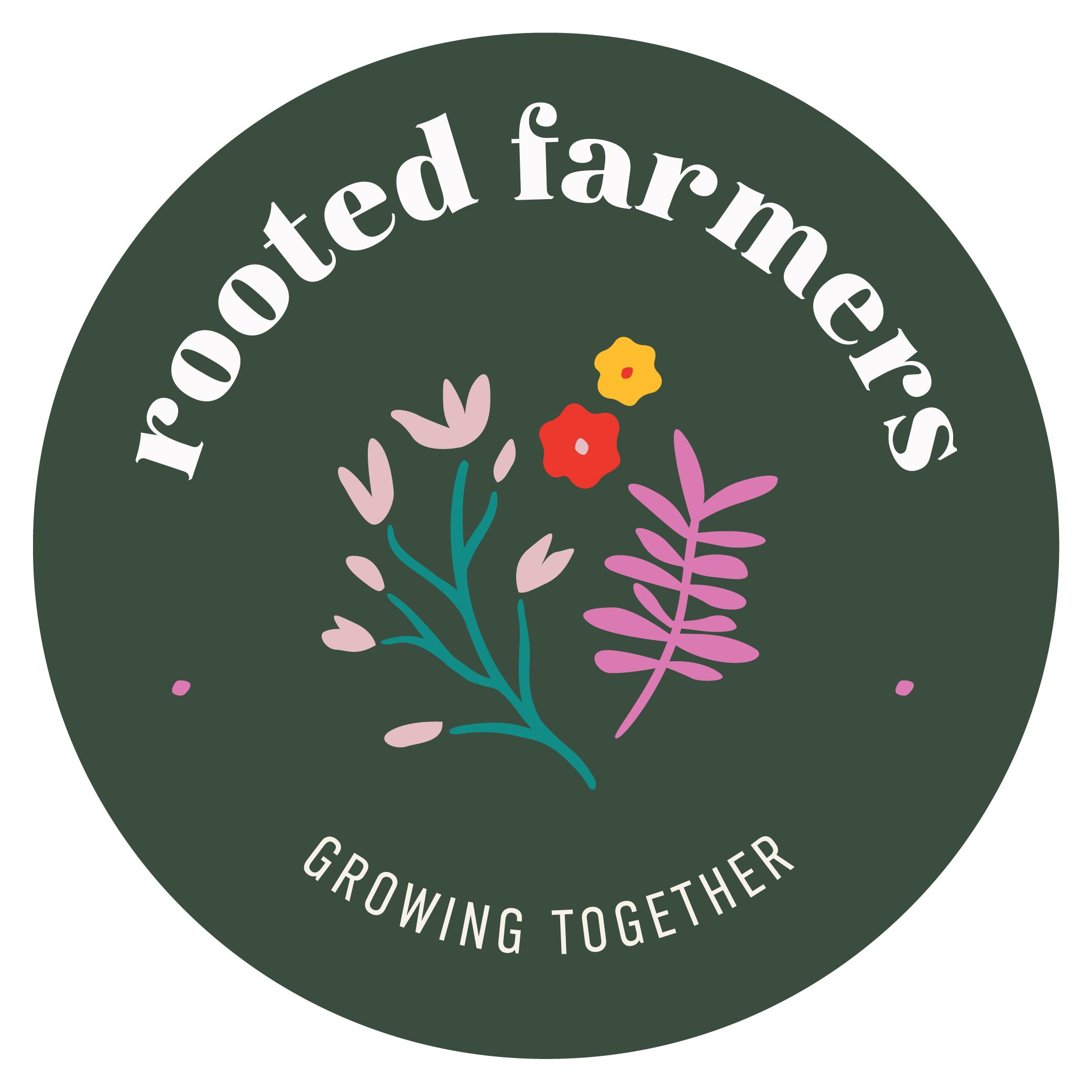
You’ve worked hard to prepare your soil properly, given your seeds and seedlings all the love and care they need to grow, and researched proper post-harvest handling. You know how to grow beautiful, unique product and want to sell your flowers to wholesale buyers but… you are unsure about how to initiate those relationships.
Understanding your customer and their needs is a critical component to your long-term success as a grower and your business. We’ve outlined seven tips below to help you start off on the right foot and lay the foundation to build trust with your buyers.
Bonus: Download our printable tri-fold brochure
Highlight the benefits of sourcing local and how to get started with shopping online with Rooted. Drop it off when you bring samples along with your business card and any other marketing materials!
1. Start Slow
Start by selecting a few florists/designers/wholesale buyers in your area. Invest your time and energy into these relationships and really nurture them. Gathering feedback early and often from a small number of buyers will help inform what you decide to grow, how you harvest, your messaging, and how you approach future relationships. Often, your earliest adopters will be your biggest cheerleaders and will serve as a reference. Keep tending to these relationships as your farm grows and you service more customers.
2. Communicate Clearly
Do you offer delivery and/or pickup? What are your delivery days and time frame for dropping off? What day of the week do you publish your availability? What is your process for accepting advance orders and requests? What is your delivery fee? Do you accept checks, cash, and/or credit cards? Making sure you’ve outlined answers to these questions in advance is important to set clear expectations. Your buyers will appreciate having clear guidelines on how to shop from you.
When meeting with a designer, it is helpful to bring this information on a printout along with your logo and contact information so they can put it somewhere visible and reference it in the future. Have this information easy to find on your website/social media too.
Be sure the schedule you outline is something you can maintain throughout the season. Maintaining a consistent schedule and regular communication from you will go a long way in building trust with your buyers and ensuring they see you as a reliable source for their flower needs. If your customers always know when they will hear from you and what to expect, their confidence in your workflow and product will grow.
3. Choose Your Visit Time Wisely
Florists and event designers are busy and, just like you, trying to run a business! Keep in mind the weekly schedule of a florist – especially designers who are event-focused. Try to contact your prospective customers before you show up at their place of business. Find out from them what the best times are to come in and speak to them. Usually, the beginning of the week (e.g., Monday or Tuesday) is better than the middle or end of the week when they are preparing for weekend events.
4. Bring Samples
Show them what you’re working with! Often, the florists or event designers you are approaching has never worked with local product. Remember it is going to take time for them to understand the differences between imports and local product. Think about the person you are visiting. Are they a wedding or event florist? Bring flowers in palettes you have seen them use on their website or social media. Are they a daily florist? Bring varieties that are long-lasting in the cooler. Show them that you have done your research and understand their needs. Add in extra product to showcase different varieties that may be entirely new to them - it will go a long way to build goodwill.
5. Be Conscious of Their Time
Do not expect to have an hour-long meeting with your prospective customer. Have an elevator pitch ready outlining where you are located, handing them your samples and print out with your ordering and delivery information, any specialties you have (growing woodies, perennials, greenery), how long your season should last, and offer to have them come to your farm if you are comfortable showing people around. Expect this meeting to last around 10 minutes (or less.) A short meeting is okay! You have plenty of time to make an impression while valuing their time.
Remember to choose a day and time to visit that is likely low traffic and low intensity for them - a Friday afternoon would likely conflict with their design schedules, so be sure to consider their quieter windows (e.g. Tuesday mornings!).
6. Solicit Feedback!
After you bring samples, be sure to check in about a week later. Ask specific questions to really dig into their needs. What’s their experience buying local? Are there specific varieties or colors they are seeking? Do they prefer stems with a lot of movement or more solid ones? Do they have a stem length preference?
Asking specific questions will show your customers that you value their input. Feedback is a gift! Be open to hearing what they need outside of what you have brought them and also understand it may take time for them to adjust to working with your product. Show you have listened by bringing varieties that take into consideration their answers. Your openness will lead to a blossoming relationship!
7. Be Patient! (Relationship Building Takes Time)
After you have delivered samples and asked for feedback, be sure to send them a handwritten note thanking them for taking the time to chat with you. Mention that you are looking forward to staying connected throughout the season. Subscribe to their newsletter (if they have one) and/or start following them on social media and engage with their content. Remember it often takes more than one visit for them to start ordering product from you!
